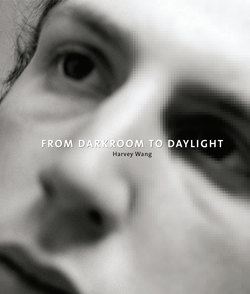Читать книгу From Darkroom to Daylight - Harvey Wang - Страница 10
На сайте Литреса книга снята с продажи.
ОглавлениеTHE END OF KODACHROME
Jeff Jacobson:
Kodachrome, I think, was the grandest manifestation of color in film. There is nothing quite like looking at a Kodachrome slide. I mean, it’s really beautiful to sit in a dark space and project slides.
Alex Webb:
Kodachrome has a kind of rich smoothness, a sense of depth, both depth of color, and depth in terms of the sort of three-dimensional feel of it.
Jacobson:
Kodachrome is a unique process. It’s a far richer color film than anything else that’s ever been made.
Webb:
It has particularly deep blacks, particularly deep reds. It has a kind of punchy emotionality.
Jacobson:
Kodachrome also defined a whole era of how Americans thought about their life. People looked at their lives through Kodachrome, especially in post-war America, and it really defined, through the ’50s and the ’60s, what American life looked like. I started using Kodachrome in the late ’70s. I just realized pretty quickly that there’s nothing else like it.
Webb:
When I came to working in color in the late ’70s, really, in trying out different color films, the only film that made sense for me at that time, in 35 millimeter, was Kodachrome. With Kodachrome you’d have your cartridges of film, and you’d ship them directly to some Kodak facility, or drop them off at some camera store. Then the slides came back to you in yellow boxes.
Jacobson:
There’s something about opening that box, and laying those slides out…. For me, it was a magical moment.
Webb:
But usually the magic disappeared incredibly fast.
Jacobson:
And I always would just look at them first. I’d lay them out on a light table before I’d project them. I would start editing from a light table. I still do. Unfortunately, they’re not in the little yellow boxes anymore.
Webb:
There was something about the time it took, physically, to go through those, through the transparencies, and back through them. This process of making a first cut, putting part of it away, and then making another cut, and another cut, and slowly whittling it down, was very satisfying in many ways. I certainly was worried for a number of years about the possibility of the disappearance of Kodachrome, because they had been talking about it for years, and it was a slow process. I remember Jeff [Jacobson] calling me one day, and he said, “Alex, you won’t believe where I am.” And I said, “No, where are you?” And he said, “I’m in—I’m in Parsons, Kansas. I’m at Dwayne’s Photo!” you know? And then he said, “You know, it really just looks like a little mom-and-pop photo shop, but they have all this Kodachrome coming in from all over the world.” Dwayne’s Photo was the last processor of Kodachrome and processed the final roll in 2010.
Jacobson:
The market for Kodachrome clearly collapsed.
Webb:
The last major project that I completed in Kodachrome was Violet Isle (Radius Books, 2009), the Cuba book that Rebecca [photographer Rebecca Norris Webb] and I did together. In some ways, it’s kind of appropriate that Cuba be the last Kodachrome project. You think of Cuba as sort of associated with the ’50s and ’60s, and of course, Kodachrome is a film that one associates with that era.
Jacobson:
For me, the end of Kodachrome is dovetailing with a period in my life where I’ve been forced to face my own mortality, because I had cancer, and went through chemo, and then about a year later, Kodak discontinued Kodachrome 200. So the two events are related for me, but the preciousness of the remaining Kodachrome just highlights the preciousness of any remaining time I have in photography. So in that case, if they had to end Kodachrome, this was a pretty good time in my life for them to end it. It has heightened my awareness of it, I think, in a creative way, and all things end. The only constant thing in the universe is that it’s going to change. I’ll figure something else out.
